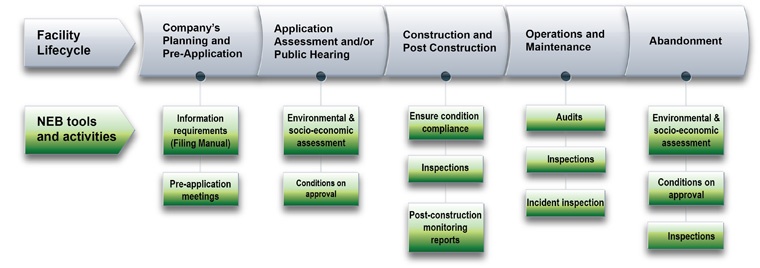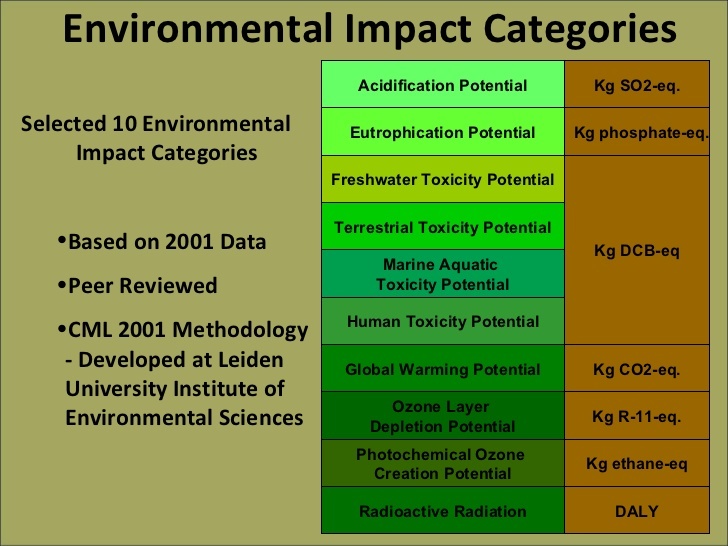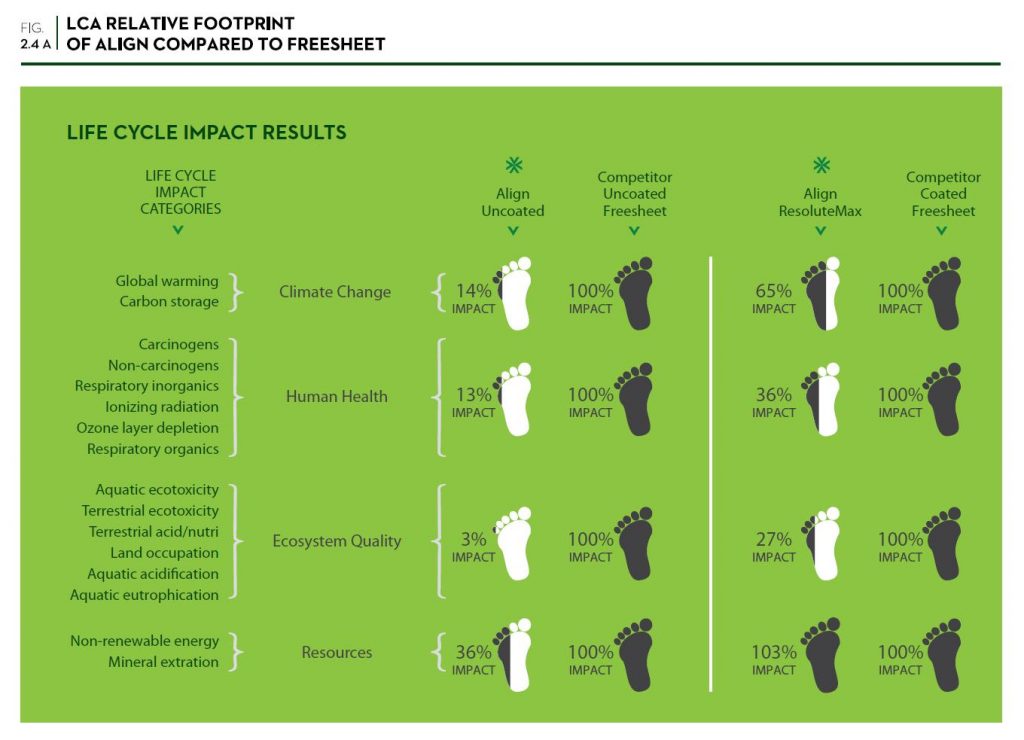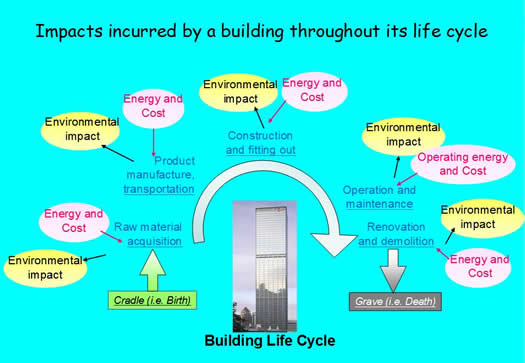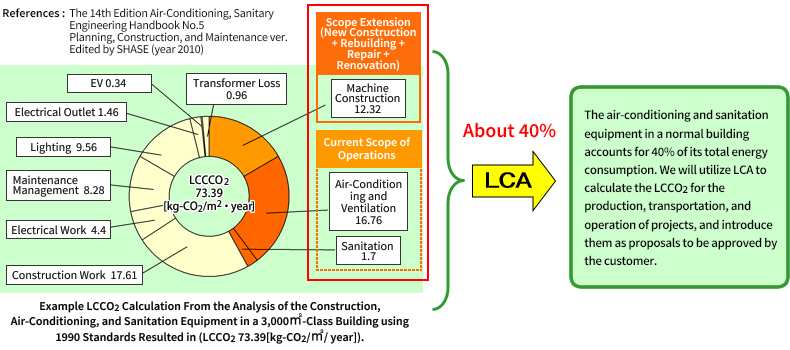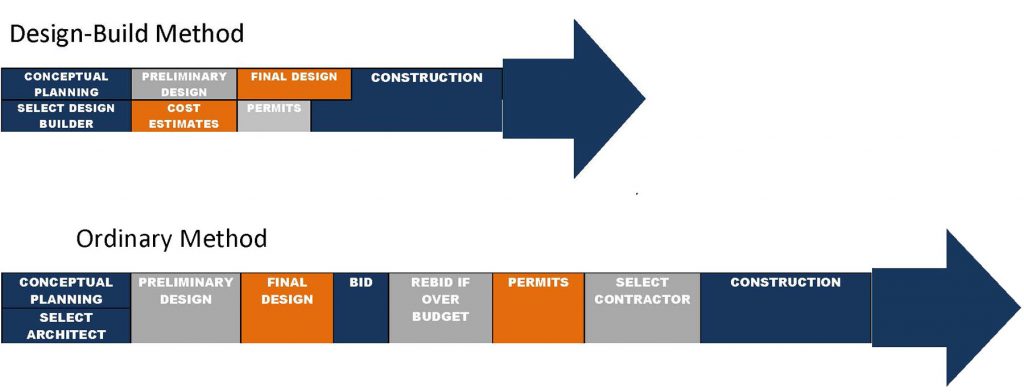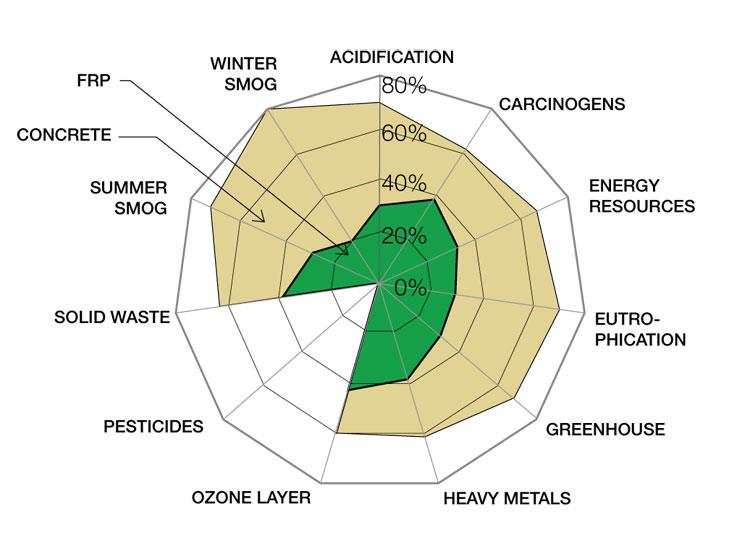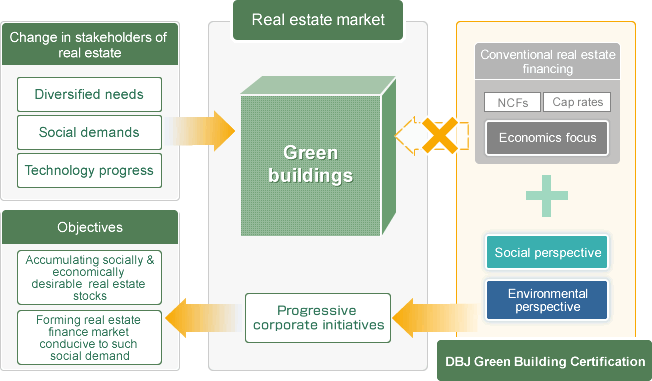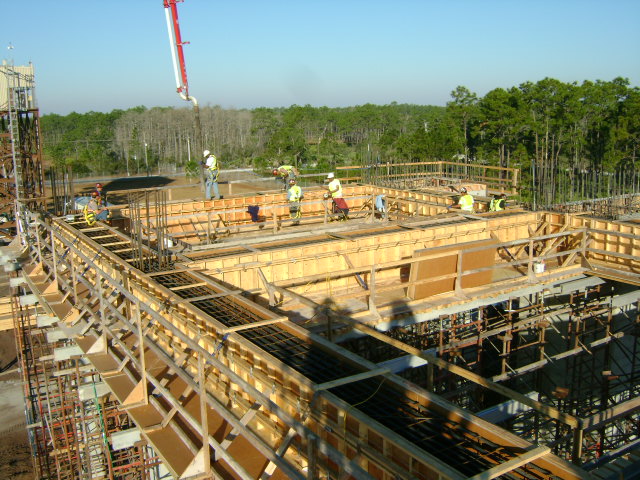Green Life Cycle Facilities Assessment, Community and World Impact
Building a Green Life Cycle Facilities Assessment: a Facilities Impact on it’s Community and the World over its Projected Life
Building a Green Life Cycle Facilities Assessment in Practice balances benefits against the costs of resource consumption from fabrication to deconstruction of a building.
By comparing the whole building and individual components, architects and engineers can calculate environmental impacts at the outset of a project, and refine those calculations as the project proceeds, to show owners what the potential is for a proposed design option to cause or mitigate global warming, acidification, eutrophication (excess nutrient leaching that causes, for example, algae bloom), fossil-fuel depletion, smog formation, ozone depletion, ecological toxicity, and water use.
The life-cycle assessment (LCA) process usually includes all participants in the planning, design, construction, and operations of a facility and begins with setting the goal and scope of the LCA. The LCA might focus on one specific impact, such as global warming potential. Step two, inventory analysis, would then quantify the input and output of each element of the design being analyzed to determine how many units of greenhouse gases will be released or embodied (in this case, measured as CO2 equivalents). The impact could then be analyzed, based on the set goals, and decisions can be made based on the resulting interpretation.
The process is heavily dependent on the regional accuracy of government databases and hampered by the one-off nature of building design and construction. Government and nongovernment organizations are currently working to refining both the databases and the software that crunches the numbers to make sense of the reams of raw data for non-technical decision makers.
The Rationale
As the architectural and construction industries increasingly emphasize sustainability, more comprehensive methods are being developed to evaluate and reduce environmental impacts by buildings.
It recognized in the current construction environment, that limitations of LCA—particularly the current nascence of client demand and comprehensive databases make Green Life Cycle Assessment a rarity—one that looks ahead to the next emerging discipline in measuring building design, construction, and operations sustainability.
Some of the more outstanding and relevant assessments preformed in addition to all the usual LCA factors within a Green Life Cycle Assessment include:
Global Warming Potential (GWP)
Global Warming Potential, or GWP, has been developed to characterize the change in the greenhouse effect due to emissions and absorptions attributable to humans in a Green Life Cycle Facilities Assessment. The unit for measurement is grams equivalent of CO2 per functional unit of product (note that other greenhouse gases, such as methane, are included in this category, thus the term “CO2 equivalent” is an impact and not an emission).
Acidification Potential (AP)
Acidifying compounds emitted in a gaseous state either dissolve in atmospheric water or fixed on solid particles. They reach ecosystems through dissolution in rain. The two compounds principally involved in acidification are sulfur and nitrogen compounds. The unit of measurement is grams of hydrogen ions per functional unit of product.
Eutrophication Potential (EP)
Eutrophication is the addition of mineral nutrients to the soil or water. In both media, the addition of large quantities of mineral nutrients such as nitrogen and phosphorous results in generally undesirable shifts in the number of species in ecosystems and a reduction in ecological diversity is considered in a Green Life Cycle Facilities Assessment . In waterways, excess nutrient leads to increased biological oxygen demand (BOD) from the dramatic increase in flora that feed on these nutrients, a subsequent reduction in dissolved oxygen levels, and the collapse of fish and other aquatic species. The unit of measurement is grams of nitrogen per functional unit of product.
Fossil Fuel Depletion
This impact addresses only the depletion aspect of fossil fuel extraction, not the fact that the extraction itself may generate impacts. The unit for measurement is mega joules (MJ) of fossil-based energy per functional unit of the product. This category helps demonstrate positive environmental goals, such as reducing the energy needed to produce a product, or such as producing a product with renewable, nonfossil- based energy.
Smog Formation Potential
Under certain climatic conditions, air emissions from industry and fossil-fueled transportation can be trapped at ground level, where they react with sunlight to produce photochemical smog. The contribution of a product or system to smog formation is quantified by this category. The unit of measurement is grams of nitrogen oxide per functional unit of product. This highlights an area where a regional approach to LCA may be appropriate, as certain regions of the world are climatically more susceptible to smog.
Ozone Depletion Potential
Emissions from some processes may result in the thinning of the ozone layer, which protects the earth from certain parts of the solar radiation spectrum. Ozone depletion potential measures the extent of this impact for a product or system. The unit of measurement is CFC-11 per functional unit of the product.
Ecological Toxicity
The ecological toxicity impact measures the potential of a chemical released into the environment to harm terrestrial and aquatic ecosystems. The unit of measurement is grams of 2, 4-dichlorophenoxy-acetic acid per functional unit of product.
Water Use
Water resource depletion has not been routinely assessed in LCAs to date, but researchers are beginning to address this issue to account for areas where water is scarce, such as the western United States. The unit of measurement is liters per functional unit is used in a Green Life Cycle Facilities Assessment.
Resources:
CODES & STANDARDS
ENVIRONMENTAL REGULATION
GREEN BUILDING
PUBLIC POLICY
Wood and Green Building: The Role of Green Life Cycle Facilities Assessment
AIA Guide to Building Green Life Cycle Facilities Assessment in Practice
PDF Imbedded
Where does Your Steel Come from?
PDF Imbedded
Athena Sustainable Materials Institute Guide to Whole-Building LCA in Green Building Programs
Imbedded PDF
When it has to be done right, hit the Expert Button
Call Nationwide Consulting, LLC today for a free consultation and you hit the expert button:
Nationwide Consulting, LLC
Robert E. Hanson
Principal Partner
410.336.4961




